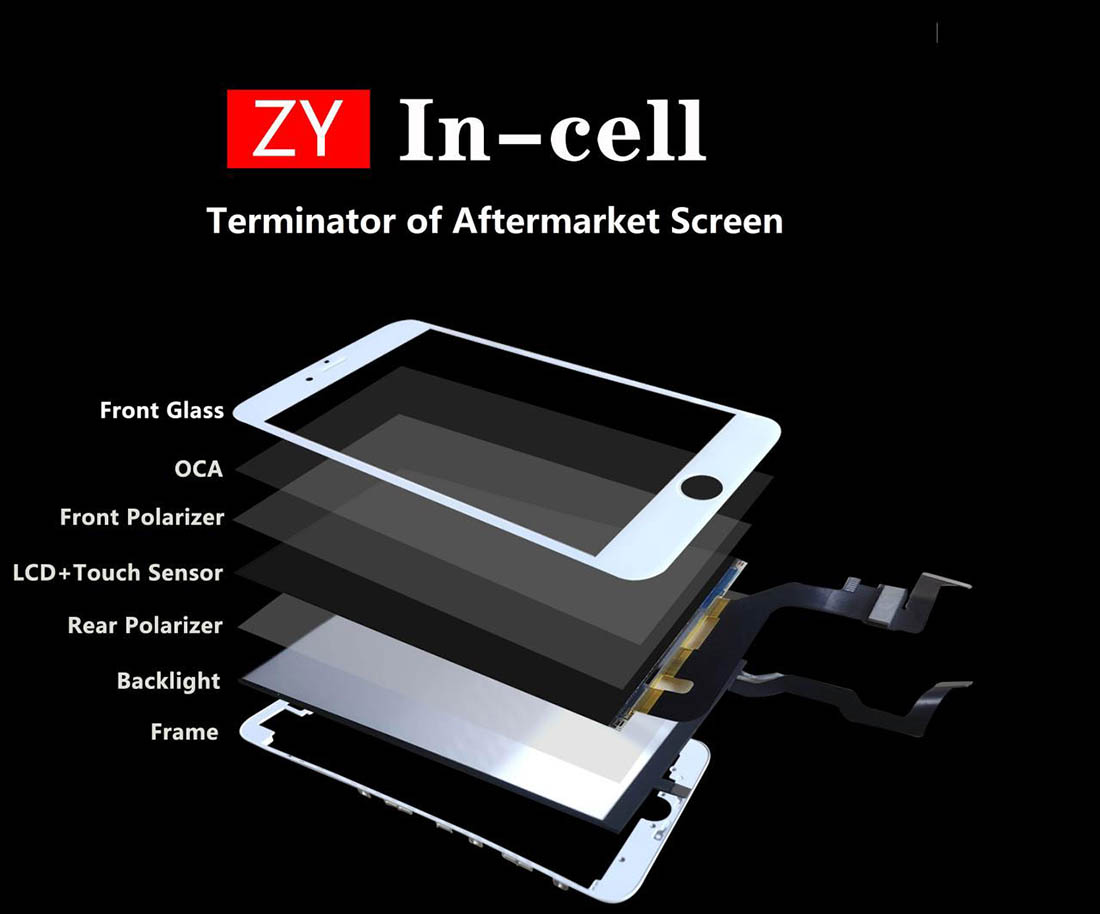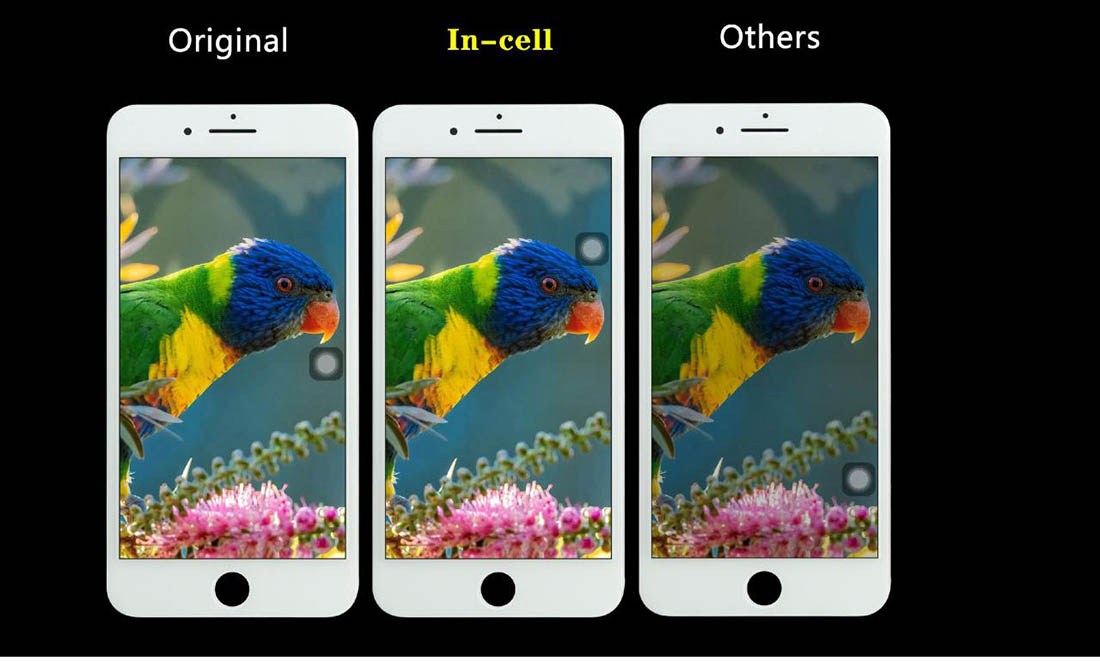
Both the In-Cell and On-Cell screen have the structure of touch sensor+ LCD, which is thinner without a touch layer. Has the touch sensor layer disappeared? In-Cell and On-Cell screens integrate the touch layer and display, which is the key to distinguishing In-Cell and On-Cell screens.
What is In-cell?
In-cell consists of the front glass, a front polarizer, a touch sensor + LCD, a rear polarizer, and a backlight. In-cell places the ITO touch film under the glass substrate of the display. Blended together, the representative model is Apple's iPhone5.
What is on-cell?
Common LCD technology consists of protective glass, touch layer, air layer, and display layer. On-Cell places the ITO touch film on the upper glass substrate of the display, reducing the air layer and touch layer. Samsung Galaxy S2 That's it. The screen thickness is 8.49mm.
In-cell VS on-cell
1.Visual effect
In theory, in-cell makes the screen one layer less, and the screen picture is clearer than the on-cell screen.
2.Thickness
In-Cell is lighter and thinner than On-Cell.
3.Screen strength
On-Cell is more resistant to drop than In-Cell. In-Cell fuses the touch layer with the liquid crystal layer. if the touch screen was damaged, and the display must be replaced together.
4. Production difficulty
Early In-Cell was more difficult to control production than On-Cell. As the In-Cell manufacturing process matured, both In-Cell and On-Cell production control technologies tended to be stable.
5. Touch sensitivity
The In-Cell screen directly fuses the touch layer and the liquid crystal layer together, and the sensing noise is large. A special touch chip is required for filtering and correction processing.
6. Yield rate
The yield of In-Cell and On-Cell screens is already at the same level, and large-scale shipments are not a problem.

Conclusion
On-Cell has an additional touch layer, which will increase the thickness to a certain extent and has limited display effects. In-Cell has a touch sensor embedded in the pixel, and the area available for display will be reduced. This will cause the image quality to deteriorate to some extent, but this is not a serious problem and can be compensated by using a touch chip. If you continue this way, whether it is G + G or G + F, or OGS will eventually be replaced by On-Cell, and On-Cell is only a transition of In-Cell, and only In-Cell will survive in the end.

Come to HENGWEI ye and choose what you like
Mobile screen,We create a series of high-quality mobile screens for you
